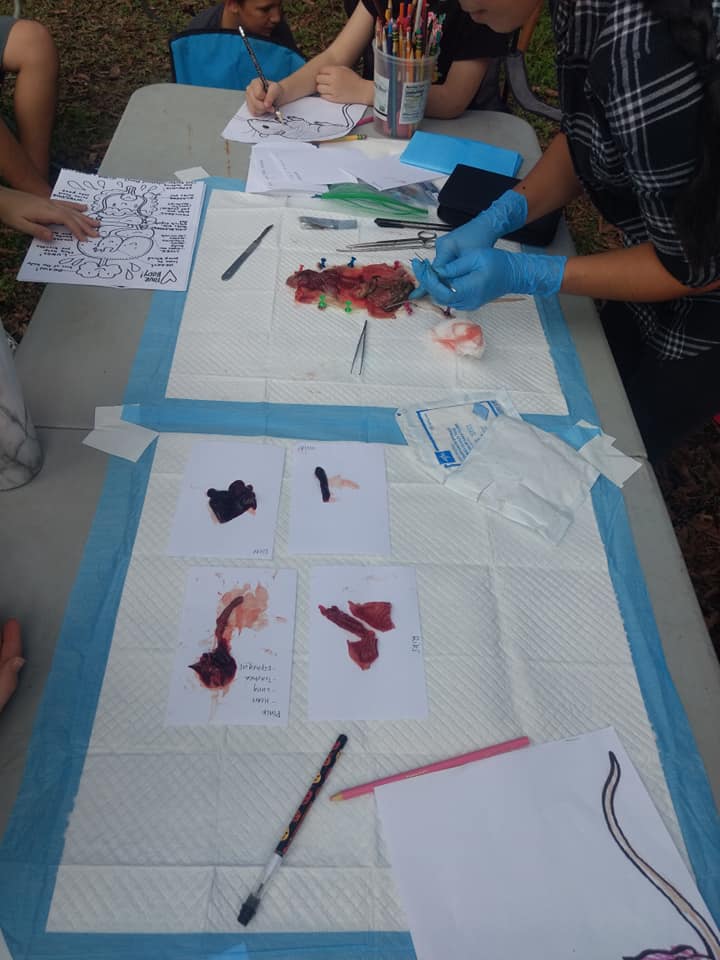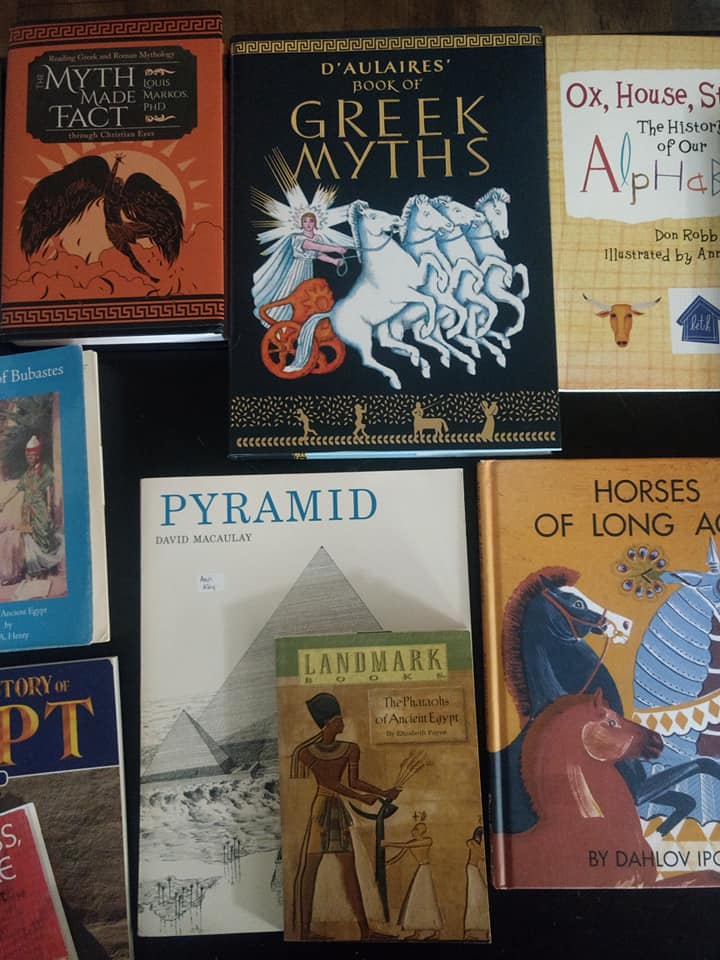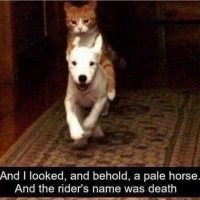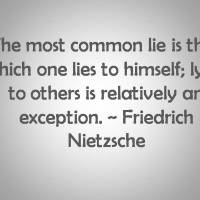A Year of Homeschooling Peacefully in the Ancient Times
The school year began, for me, in a bit of chaos. My son was born over the summer. My mother had died. In addition to my newborn son, I had two extra children in my household. I was overwhelmed by the impending doom of our co-op. I could sense it coming, but I honestly thought it was a year or two off and I was committed to giving it my kiddo’s fifth grade year before bailing, believing that the proverbial poop would hit the fan a few months after my departure. (It hit sooner.)
Still, after the children went back to their own home. The co-op dissolved and something new began… we found ourselves homeschooling through the ancients in our own little Pax Romana. We declared this our year of homeschooling in peace and it has been phenomenal.
As usual, we began our dive into Ancient history with the Epic of Gilgamesh. After years of reading the picture book trilogy by Ludmila Zeman, it was time to upgrade to a a more “grown up” version of the story. Gilgamesh the Hero by Geraldine McCaughrean was a perfect bridge for the dialectic stage, from elementary to the full translations of high school. Kiddo was struck by the subtle differences, the pieces that make it suitable for older readers, but not for younger ones. As a child who doesn’t like change, learning that different adaptations have a different flow and feel to them has been a challenge. As a ten/eleven year old, she has now been exposed to several adaptations of the Gilgamesh myth and also has a much broader view of near eastern cultures and history. I’m happy to say, my homeschooler as an elementary graduate has a more thorough understanding of history and other people groups than I did as a public school high school graduate. These are the goals, and we’re winning.
I read The Golden Bull by Marjorie Cowley out loud to two ten year olds and an eight year old. This is right about the time we started making our timeline (using Amy Pak’s Home School in the Woods History Through the Ages Record of Time), and having the kids perform narrative plays of what I had just read to them while I nursed my infant. Our house is fairly full of music, so naturally we ended up making a lyre (and some ukuleles) as a hands on craft which in turn became props in our living room productions of The Golden Bull.
Meanwhile, we were also re-reading Susan Wise Bauer’s Story of the Wold Volume One for the third time, reading Story of Civilization for the first time, plucking our way through the Usborne Encyclopedia of the Ancient World, reading the Old Testament, and for good measure added a plethora of picture books I had on hand from the last time we studied the ancients.
Ox, House, Stick by Robb was discovered while we studied the Phoenicians and the alphabet. This one came highly recommended, and the kids liked it ok, but it wasn’t my favorite. We also re-read The Riddle of the Rosetta Stone by Giblin, that one is always fun and fascinating.
We had some extensive discussions regarding laws and lawmakers. The kids each read a biography on Hammurabi, the one by Mitchell Lane Publishers was the best, we thought. A few rabbit trails later and we spent an afternoon on You Wouldn’t Want to Be an Assyrian Soldier.
As we moved into the time of the Egyptians, we tackled Green’s Tales of Ancient Egypt, The Landmark Book of Pharaohs by Payne, Mara: Daughter of the Nile by McGraw, The Golden Goblet also by McGraw, and The Cat of Bubastes by G. A. Henty. Kiddo hated Mara, I thought it was great. I found the Golden Goblet on the boring side, Kiddo loved it. The fun thing about reading so many books together are the discussions. Homeschooling is basically book club every day. I love book club!
One of my pet topics of study as an adult is the Pharaoh Hatshepsut. I find her to be the most intriguing and have some theories as to where her place in history overlaps with our knowledge of biblical history. The kids each grabbed a biography and I re-read a few of my own. Although I usually love National Geographic stuff, our favorite is the one put out by Compass Point Books. Compass Point Books, for the most part, is a huge go-to in our house. If I see one, I grab it, often accidentally purchasing duplicates. They are more thorough than the Who Was series, but less daunting than the DK series, although we own a good amount of both of those as well. At this point, Kiddo tried her hand at her first full length essay, complete with me dragging out my typewriter for her to type the finished product.
I also love David MacCauley books and we read Pyramid. Kiddo does *not* love David MacCauley books, which is unfortunate because I think I own them all. She preferred diving into Mummies, Tombs, and Treasure and the Magic Tree House Research Guide: Mummies & Pyramids. Side note to the Magic Tree House books: Although the fiction books are overly simplistic and quickly outgrown, we have found that the research guides last all of the elementary school years and are revisited often. We will keep the research guides long after the fiction series is purged, I believe. As homeschool eccentrics this study coincided with our anatomy studies in science. The kids got the chance to observe a profession necropsy of a rat and later Kiddo tried her hand at mummifying the spare dead rat. AmenRAThep still lies in our garage buried in salt in his intricately decorated plastic tomb. An expository essay on the mummification process ensued. More tapping away at my now “vintage” typewriter… More revisiting all our favorite picture books (Mummy Cat by Ewert just never gets old and Tutankhamen’s Gift is lovely) as well as the HMNS for the Ramses exhibit.



When we wrapped up our anatomy studies, the mummification process became a nice bridge into our archaeology unit. We used the Wonders of Creation series from MasterBooks.com. The Archaeology Book by David Down and The Geology Book by Dr. John D. Morris led beautifully into The Fossil Book by Gary Parker. We’re definitely going to continue through this series into Caves, Minerals, Oceans, Weather, and Astronomy as we move through the timeline to the middle ages.
I love multi-sensory learning whenever possible, so during all this we also tried our hands bringing our history studies to our taste buds. One of my favorite cookbooks to pull out during the ancient years is The Philosopher’s Kitchen. It’s full of ancient flavors that make use of modern kitchen routines so you can enjoy the taste of the times without slaving away. We have recipes we’ve attempted to make the way they would, but I’m content with learning to use the kitchen I have instead of trying to time travel. Kiddo found some easy kid recipes in various places and we also enjoyed some Mesopotamian sweet breads she made herself that were rather tasty. Cardimon and honey is a lovely flavor combination.
Another aspect to unit studies/ studying all disciplines through the timeline, is that we tried Spelling You See for the first time and used the Ancient (level F) package. Spelling You See was developed by a reading specialist who encourages identifying word patterns and color coding them. Married with dictation of an entire topical paragraph, this curriculum abandons the by rote memorization of a list of spelling words. I find this method useful, but we will also continue with our Spelling Workout books after we’ve completed all the lessons in this book, as spelling is a subject we’re going to have to continue to work on long after some of our peers have abandoned it as a subject. I’m ok with this, Kiddo tests gifted in most subjects but spelling is a struggle. We remind ourselves daily that we can do hard things (through Christ) and that it is ok to not be perfect at everything as long as we’re trying our best.
Adara by Gormley, God King by Williamson (we had already read Hittite Warrior years ago), and Days of Elijah by Noble were read as we continued our studies of the Old Testament as well as Herodotus. (Kiddo loved Days of Elijah, I tried to read it with her but I found the writing style very off putting, I honestly cannot remember if I finished it or not.) Kiddo re-read Bendick’s Herodotus & The Road to History, we both love all things Bendick. I wanted to re-read Herodotus’s book as the last time I had read it Kiddo was two or three, but time got away with me. We were knee deep in fractions because math may never be abandoned, no matter how many people die (we had four significant deaths this season), or how tired you may be. What kept our mind clear enough to finish our Singapore 4a&4B curriculum and get through Math-U-See Epsilon, was the fact that we were taking time to study God’s word daily. We weren’t just trying to incorporate theology in our homeschool, my husband was actually leading bible study every evening (and had been since the start of our marriage in 2020); and in addition to that, upon moving into our new house in 2021 we began using the Simply Charlotte Mason Scripture Memory System. I found a reasonably priced recipe box on Amazon and started adding index cards as per the instructions of the method (follow the link). Focusing on hiding God’s Word in your heart, opens the mind up for so much more, and in all the crazy we prayed for God to help us be good stewards of our brains and our time and the results have been delightful.
With all this Bible study, Kiddo requested to eventually study Aramaic and Hebrew and Koine Greek, but we decided to wait as we continue on our Latin studies. One thing at a time, and we still have some Latin books to complete.
Now, for the Greeks… The D’Aulaires have a lovely Greek Myths book. In addition to that, Kiddo read more books on Homer’s work than I can count. The highlight reel were repeat romps through the Mary Pope Osborn adaptation, Sutcliff’s Black Ships Before Troy and The Wanderings of Odysseus, and Lively’s In Search of a Homeland. She also read for the first time Aleta and the Queen, Flaxman’s The Iliad of Homer, and Colum’s Children’s Homer. By the time she reads Homer’s unabridged work, she’ll know the stories so thoroughly I’m hoping the poetry of it will shine through and delight her in ways that evaded me when I blindly trudged through it for the first time because I had no previous knowledge of context to work from. I had planned for us to read Edith Hamilton’s Mythology, but when you’re done, you’re done. So we’re saving Hamilton for the next time around, in four years.
Bendick’s Archimedes and the Door of Science as well as The Librarian Who Measured the Earth by Lasky are must haves. We have read them every time we’ve studied the Ancients and sometimes we pluck Lasky’s picture book up to read just for kicks.
Rome Antics by MacCauley was beautiful. It takes about ten minutes to read, but days to absorb if you want to go back and study all the architecture as well. I didn’t dwell on it too much as she’s already read Where Were the Seven Wonders of the Ancient World? and Where Is the Parthenon? (we did a hands on project with friends building the Parthenon out of marshmallows which was fun). While on the Who/What/Where series kick, she also read Where Is the Great Wall? We’ve studied ziggurats and pyramids and a number of other structures this year, and now that we are currently studying Rome, I’m going to have to collect my thoughts and make proper plans to lay the groundwork for a strong introduction to architecture. In the meantime, now that summer is here, we’re listening to the Rise of Rome on Wondrium, and plucking through our never ending reading list.
I’ll continue to update as we make our way through the last hundred years or so before Christ, through the New Testament, and onto the invasion of Britain. We already studied Pompeii and went to the museum exhibit with our co-op, and volcanoes were studied in passing while we raised money for the Pacific Rim Awana programs and made a homemade volcano during a friend-date at our house. (I think we may start a science club…)
(We got a taste of Asian mythology and folklore with some read alouds and picture books, but I think we will revisit them in a more heavy handed way when we study Marco Polo again. If you’re looking for titles, I recommend perusing everything by Demi as well as 101 Read-Aloud Asian Myths.)
This school year has been our most relaxing yet, despite the chaos of life, and we hope to continue this pattern in the years to come.
North American History and Some Confusion Over Canada
We read through history chronologically, something those who have read this blog for awhile are perhaps well aware. In doing so, we tend to skip around the globe a tad. I try to redirect the kiddo to maps, but in the case of North America, I failed somewhere…
“Wait, where’s Canada?”
“North.”
“I don’t see it.”
“It’s north of the United States.”
“Canada isn’t a state?”
As a homeschool mom my face palm was directed one hundred percent at myself. “No, baby, it’s its own country.”
I know how why the confusion occurred. Well, let’s back up. We’ve been reading, a LOT…
Saint Isaac and the Indians – Milton Lomask
When the French were flocking to North America and colonizing the forests and St. Lawrence River, along with them came Jesuit missionaries intent on sharing the word of God with the Mohawks (Iroquois) and Huron people. Some, were martyred by the very people whose souls they were trying to save. Isaac Jogues, was such a man. He was later sainted by the Catholic Church.
We are not Catholic, but we do value Catholic church history as an important part of education. I try to keep a well balanced and diverse selection of biographies as we study so we can see a complete picture of the world and all God’s creation. When looking for elementary friendly biographies on those who have been sainted, I find Ignatius Press a reliable source. Lomask’s book didn’t fail us and we were enthralled with Isaac’s story.
The Courage of Sarah Noble – Alice Dagliesh
Kiddo read this on her own, then I read it immediately afterward, so we could discuss. I’m getting to the point where I hand her more books to read alone, not because I’m reading out loud less, but so we have more time to read meatier things aloud while she tackles the easy stuff. She enjoyed this one and made a lap book off a kit I found on Teachers Pay Teachers. It’s not my favorite, but I definitely think it has value on an elementary reading list.
The Matchlock Gun – Walter D. Edmonds
This is the second time we’ve read this book. The first time we paired it up with a trip to the science museum for a firearms through the ages exhibit. Kiddo was excited to revisit it and we looked through old pictures from when we got to peruse cases and cases of antique matchlock guns. This is another fantastic “living book” to read during a study of early America.
Who Was Blackbeard? – James Buckley Jr.
Kiddo hates any book with “bobble head people” on the cover. When she was younger I used to put post-it notes over their faces. She’s getting better about ignoring the awkward caricatures on her own and was able to put a lot of personal preference aside for the sake of a good pirate story. The Who Was series is perfect for filler when you just can’t find a better biography on a person readily available.
Ben and Me – Robert Lawson
I love Robert Lawson books. So does Kiddo. But it wasn’t just Robert Lawson that captivated her for this one… mice make for riveting anthropomorphized creatures. We both just love a good rodent in the lead. For Kiddo there was another aspect… the week she read Ben and Me, she actually binge read about six Ben Franklin biographies. She just can’t get enough of the guy.
The D’aulaires have a fantastic picture book about him, we are on a mission to own everything they wrote, and there were a handful of other generic chapter books on our shelves she powered through for the sake of more Ben.
While she was doing all this Ben Franklin research, I read…
Myne Own Ground: Race and Freedom on Virginia’s Eastern Shore – T. H. Breen
…which was utterly brilliant. I’ve never read such an honest, objective account of the slave situation in colonial Virginia. It is single handedly the best race relations book I’ve read to date. And I’ve read a lot of them over the years, trying to understand everyone. Kiddo obviously didn’t read this one this time, but I definitely plan on including it on a high school reading roster.
This is where I derailed, while she focused on Ben, I was reading about the English Republic between 1649-1660. I read a book on Charles I by Leanda de Lisle, a book about Roger Williams by James A. Warren, a biography on Henrietta Miaria (Charles I’s wife) by Alison Plowden, and a biography on Charles II by Martyn R. Beardsley.
During this time we discussed Ben Franklin’s travels to France. We talked about a book we read a few years ago called Madeleine Takes Command about a French girl at a Fort in Canada. We discussed the politics of what was going on between North America and Europe… She likes to understand people and things they fight for, I didn’t catch on that the borders were unclear.
Benjamin West and His Cat Grimalkin – Marguerite Henry
My husband read Brighty of the Grand Canyon out loud before bedtime as a family. It was lovely. He has a lovely reading voice and Kiddo and I just love Marguerite Henry. Brighty is set during Teddy Roosevelt’s time, so it was a little misplaced, but delightful. Benjamin West was a perfect way to drag ourselves back to our timeline, and it was required reading for her history class at Atrium (our co-op she attends and I teach at once a week).
We loved this one and it put us both in the mood to paint, we watched a YouTube slideshow of his work, so we would be familiar. While feeling artsy, we read a biography on Maria Merian, The Girl Who Drew Butterflies. We revived our nature journaling.
But Benjamin West also gave us an opportunity to discuss Quakers. We hashed out the similarities and differences in our beliefs after she pointed out that they’re a bit like me… luddites. My kid likes to call me out for my avoidance of technology. Ironic, considering I’ve written a blog for over a decade.
Amos Fortune, Free Man – Elizabeth Yates
This is one of the most beautiful stories I’ve ever read. I’m so glad the Kiddo and I got to share reading it for our first times together. She asked if we could visit his historical landmark, and I definitely want to add that to our list of vacation goals.
Ethan Allen: Green Mountain Rebel – Brenda Haugen
I love the Signature Lives biographies. They’re such great resources. The cool thing about reading about people like Ethan Allen is the opportunity to really discuss flaws and virtues in human beings. How most people have both. Some people teeter into the realm of so flawed they become evil and some are so virtuous they become sainted… and some, like Ethan Allen, have a bizarre mix of both. Mischievous to a fault. Brash. Heroic. Terrible. Principled. A Menace. A Patriot. A Legend.
George Washington then became the highlight of our weeks… we read George Washington’s Teeth, Phoebe the Spy, we talked about the spy ring (an endless fascination because we descend from Townsends, but not those Townsends), The Winter at Valley Forge: Survival and Victory, George Washington’s Breakfast, Cinnabar, the One O’Clock Fox.
Calico Captive – Elizabeth George Speare
My first introduction to Elizabeth George Speare, I believe, was The Witch of Blackbird Pond. I can’t wait to share that with her; but Kiddo’s was Calico Captive. She was riveted. “One more chapter?” But the chapters are long. “Please?” We spent hours, against Charlotte Mason’s advice of limiting book binging, we binged.
Note: Calico Captive involves Indian capture, being sold to the French, living as a prisoner in CANADA.
Not to let a good theme go to waste, we also read Indian Captive: The Story of Mary Jamison by Lois Lenski.
We brushed up on our Benjamin Banneker knowledge from the last time we studied him, and then dived into…
Early Thunder – Jean Fritz
I just can’t get enough Jean Fritz. This particular title might be my favorite Jean Fritz yet, and I really do love them all. I thought it would take us longer to finish, but it became another “Please read another chapter” book. We finished this one even faster than Calico Captive.
Early Thunder follows our underlining theme for history this year which has largely been: “It’s Complicated.” I loved how perfectly it addressed all the emotions of the people in Salem as they wanted to be good citizens but also govern themselves. What makes a good citizen? Someone who sides with their neighbors or someone who is loyal to a distant government?
From an educational stand point it helped the Kiddo sort out who the Whigs and Tories were, what they stood for and why. It gave us an opportunity to lay out the monarchy of England, the purpose of Parliament (remember the Magna Carta? What did that mean? How is that affecting the 1700s?). It set her up for revisiting the Declaration of Independence with a clearer view.
From a spiritual maturity and empathy stand point, it helped her wrestle with the idea that we cast hindsight judgements on historical figures all day, but do we really know what we would do? Do we really know what we would choose when placed in those historical figure’s shoes? The book was truly a roller coaster ride of deep thinking for a kid, and I’m so glad we made time for it.
This doesn’t even come close to wrapping up our semester studies, I haven’t even caught up to where we are on our reading list as of the posting of this blog… we tackled Thomas Jefferson, Alexander Hamilton, James Madison, Johnny Appleseed, and more…
But it does bring me to the moment of my point–Canada–and why we now have a Geography curriculum.
“Mom, I might regret this, but… can we get a geography curriculum?”
I laughed. Heartily. And then proceeded to find and order what extra bits I needed to complete something I discovered I already owned half of.
Beautiful Feet: Geography Through Literature Pack
We already had a few of Holling’s picture books, I only had to order the guide, a book, and the maps. I’m so glad I did. We’re in love.


And, we understand what’s going on with Canada now.











